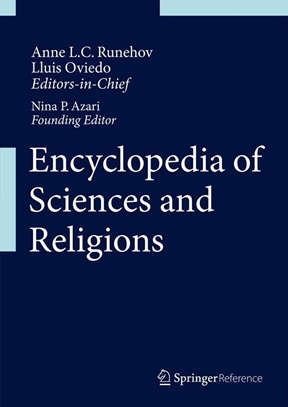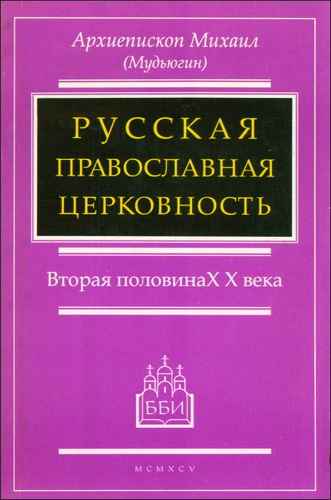
Runehov - Oviedo - Encyclopedia of Sciences and Religions
Anne L. C. Runehov and Lluis Oviedo - Encyclopedia of Sciences and Religions
Dordrecht: Springer Science+Business Media, 2013. – 2430 p.
ISBN 978-1402082641
Since the time of Ancient Greece science and religion have been closely related, at least epistemologically. For instance, as Bertrand Russell notes in Wisdom of the West (1959:13), perhaps the most important notion in Greek philosophy was the concept logos, meaning both word and measure. We believe there are few doubts that logos is one of the main concepts used in both contemporary theology and the sciences, including social and human sciences.
In Religion and Science in Context, Willem B. Drees argues, “there is not only a need for serious study of ‘Religion and Science’, as an object to be studied, but also for serious reflection in ‘Religion and Science’” (2010: 150). Scientists and scholars taking the debate seriously face the following questions. Firstly, the question of how to relate scientific theories and findings to questions of faith, meaning and purpose as raised by religions and theology. Secondly, the question of how to relate empirical questions and answers to ethical and existential questions and answers. It was through questions and reflections such as these together with the quest for an adequate understanding of the world that does justice to what it means to be a human being embedded in oneself, the world, and for many, in God, that led to the emergence of the new discipline “Science and Theology”. As the name suggests, academics working in this field are interested in both science and religion in one way or another. They may belong to the academic field of the natural sciences, the social sciences, the human sciences, theology or religious studies.
Science and Theology is ideally an intellectual venture that aims at informing scientists about the theological relevance of scientific research on religious phenomena as well as at informing theologians about the impact of scientific progress on religious hermeneutics. Seen as such, a specialization of the academic field of Science and Theology seems unavoidable. However, some esteemed voices have lately become concerned about some of the recent developments in this new discipline. There is some unease about the consequences of an excess of specialization, which would render this new field too “professional” and too far removed from the traditional interests and methods of scientific as well as theological communities. Another reason disciplines may distance themselves from the academic course of study of Science and Theology is the confusion with the academic programme called Theology of Science on the one hand and the programme of Scientific Studies of Religion on the other.
Nevertheless, in the last quarter century this new academic field has attracted scholars from a wide variety of disciplines. However, such enterprises come with questions. For example, exactly which disciplines are attracted and what do these disciplines have to contribute to the debate? Hence, in order to describe accurately the shape and character of a possible relation between science and religion, it is important to clarify the identities of the suggested participants in that relationship.
* * *
Neglect
Giuseppe Vallar14 and Nadia Bolognini14
(14)
Department of Psychology, University of Milano-Bicocca, Edificio U6, Piazza dell’Ateneo Nuovo 1, 20126 Milan, Italy
Giuseppe Vallar
(Corresponding author)
Email: [email protected]
Email: [email protected]
Nadia Bolognini
Email: [email protected]
Related Terms
Spatial hemi-inattention
Description
Unilateral spatial neglect is a neuropsychological syndrome caused by cerebral lesions which in humans typically involve the right cerebral hemisphere. Neglect has been described also in animals (monkey, cat, rat) with, however, no hemispheric asymmetries. Patients with neglect fail to orient to events (visual, auditory, tactile stimuli) occurring on the side of space contralateral to the side of the lesion (i.e., the left-hand side in right-brain-damaged patients) and to explore it. Unilateral neglect is currently interpreted in terms of deficits of higher-level processes supporting spatial cognition: impaired orientation of attention toward the contralateral side of space or defective conscious representation of it, with attentional and representational accounts being not mutually exclusive. Spatial neglect is not due to primary sensorimotor deficits (e.g., visual disorders, hemiplegia). It may involve both the contralateral side of extra-personal space (“extra/peri-personal” neglect), the contralateral side of the body (“personal”), as well as internally generated images (“imaginal”). One component of the syndrome is unawareness (anosognosia) of neurological deficits contralateral to the side of the lesion (hemiplegia, hemianesthesia, hemianopia). These different manifestations of neglect are frequently associated but may manifest also in isolation, for instance, with patients showing extra-personal, but not personal, neglect and vice versa. These dissociations suggest that, although our phenomenal experience of space is unitary, the underlying processes are multivarious and may be selectively affected by brain damage (Bisiach and Vallar 2000; Heilman and Valenstein 2011; Husain 2008).
Self-Identification
Science
Unilateral spatial neglect has been first described in the medical literature published in the second half of the nineteenth century. Early brief clinical reports came from physicians specifically involved in investigating neurological and psychiatric diseases caused by brain damage: the Czech neuropsychiatrist Arnold Pick (1854–1924) in Prague and the British neurologist John Huglings Jackson (1835–1911) in London. Subsequently, spatial neglect has been investigated in more and more detail, and it became increasingly clear that the deficit includes many components, which can present as selective deficits. This suggests an articulated and complex structure of the spatial attentional and representational systems supporting spatial cognition. After the early investigations, performed in a medical context, the manifold behavioral manifestations of spatial neglect draw also the attention of many psychologists, including, among others, Oliver Zangwill (1913–1987) in Cambridge, UK. Since its inception, therefore, the study of neglect characterized itself as the description, assessment, and interpretation of a clinical medical disorder, within the domain of neurology and, subsequently, of experimental and cognitive psychology. The scientific features of the study of spatial neglect became more specific with the development of the scientific discipline of neuropsychology, which was defined in its aims and methods in the early 1950s. Neuropsychology aims at investigating the relationships between the mind and the behavior on the one hand and the brain on the other, combining knowledge and methods primarily from neurology and psychology but also from psychiatry and neurophysiology. The main, though not exclusive, source of empirical neuropsychological evidence has traditionally come from behavioral disorders in brain-damaged patients. Current neuropsychological methods include the following: on the neurological side, first of all a state-of-the-art assessment of the site and size of the responsible cerebral lesion by structural neuroimaging techniques, and investigations of the functional state of the damaged brain by functional neuroimaging and neurostimulation techniques; and on the behavioral side, a quantitative assessment of the pathological behavioral changes, through tasks based on cognitive models of the mind. In this perspective, spatial neglect is the object of investigation of brain (mainly neurology), and behavioral sciences, including connectionist simulation of behavior. One feature of the neglect syndrome is of interest for a discipline, outside medical and psychological sciences, namely, philosophy. One main feature of spatial neglect is the lack of perceptual consciousness of events occurring on the neglected side of space that are nevertheless processed. Secondly, patients are typically unaware of their spatial neglect. Thirdly, the neglect syndrome includes other selective disorders of consciousness, with monothematic delusions. Patients may be unaware of and deny the presence of left-sided sensory and motor neurological deficits. In 1914, the French neurologist Joseph Babinski (1857–1932) definitely described unawareness for hemiplegia and coined the neologism anosognosia (from the Greek: agnosia, lack of knowledge; nosos, disease). Patients may also report delusional beliefs concerning left-sided body parts, which are experienced as not belonging to them. These deficits were systematically described by the Austrian and then North American neuropsychiatrist Josef Gerstmann (1887–1969), who coined the term somatoparaphrenia (paraphrenia: a psychotic syndrome characterized by hallucinations and delusions; somato: a prefix from Greek, meaning “body”: Gertsmann 1942). The selectivity of these deficits of consciousness suggests a multicomponent architecture of what may be termed the person’s phenomenal conscious experience, which, in the absence of brain damage, is reported as unitary.
Characteristics
The syndrome of unilateral spatial neglect is distinctive among other neuropsychological disorders in one main aspect. The deficit involves one specific sector of space which is most frequently lateral (along a left-right dimension) but may be also altitudinal (along an upper-lower dimension). The divide between the “neglected” and the “preserved” portion of space may apply to different spatial reference frames, namely, egocentric, referred to the patient’s own body or body parts, and allocentric or object-based, referred to environmental or imagined objects. Even when neglect applies to representational domains such as language (neglect dyslexia, neglect in spelling) and numerical cognition (a rightward bias in the mental number line), its distinctive feature is a lateral bias toward the side of the lesion.
Relevance to Science and Religion
Characterizing unilateral spatial neglect as a spatially selective disorder of consciousness makes its manifestations of interest to philosophers concerned with the functional properties of the mind. Specifically, the empirical observation that these disorders of conscious experience may be selective (for instance, patients may be unaware of their left hemiplegia without showing left extra-personal and personal spatial neglect and vice versa) suggests a multicomponent functional architecture of awareness of space and of the self. Pathological symptoms such as somatoparaphrenic phenomena, characterized by a disownership of left-sided body parts, often the hand, shed light on the organization of aspects of the self, such as ownership, from a neuropsychological perspective. From the vantage point of spatial neglect, the self includes a particular and unique 3D object in space (the body), surrounded by other animate and inanimate objects. This aspect may be of interest to religion.
Sources of Authority
The authorities in neuropsychological deficits are clinical and behavioral neurologists and psychologists concerned with cognitive disorders brought about by brain damage or dysfunction. After the first reports in the second half of the nineteenth century, in 1913, the Austrian neurologist Hermann Zingerle (1870–1935) described deficits of impaired perception of the body in right-brain-damaged patients, including left hemiasomatoagnosia, unawareness of left hemiplegia, and left motor neglect, and suggested that they might be due to an impaired representation of the left side of the body, caused by the right-sided lesion (Benke et al. 2004). In the 1940s, the British neurologist Walter Russell Brain (1895–1966) and the psychologist Oliver Zangwill reported symptoms of left unilateral spatial neglect after right-sided lesions. After the Second World War, spatial neglect was considered a clinical sign of damage to the parietal lobe, particularly the right one. The neurological literature was summarized in 1953 by the British neurologist MacDonald Critchley (1900–1997) in the scholarly book The parietal lobes. In the subsequent two decades, many clinical and experimental studies on spatial neglect were published in neurological and neuropsychological scientific journals. The first book, specifically devoted to spatial neglect was edited in 1977 by the North American neurologists Edwin A. Weinstein (1907–1998) and Robert P. Friedland (1948): Hemi-inattention and Hemisphere Specialization, Advances in Neurology, Volume 18 (Friedland and Weinstein 1977). Other books rapidly followed. In 1987, the French neurologist and neurophysiologist Marc Jeannerod (1935–2011) edited the book Neurophysiological and neuropsychological aspects of spatial neglect. In 1993, the British psychologists Ian H. Robertson (1951) and John C. Marshall (1939–2007) edited Unilateral neglect: clinical and experimental studies. At present, spatial neglect is discussed as a discrete and specific neuropsychological deficit in handbooks and textbooks of clinical neurology and neuropsychology. The sources mentioned above are as authoritative as can be scientific work in the domains of neurology, psychology, and neuropsychology.
Ethical Principles
Unilateral spatial neglect is a neurological and neuropsychological disorder. Seen in this perspective, as medical subdisciplines, neurology and neuropsychology are guided by the oath and law of the ancient Greek physician Hippocrates (born 460 B.C.) who is considered the so-called father of medicine. This “Hippocratic Oath” has been supplemented by the rules of the Declaration of Helsinki of 1971.
Key Values
A key value of neuropsychology, shared with neurology, is alleviating human sufferings, understood as disorders of the nervous system, which lead to physical and mental impairments, personal dependence, and even death. Behavioral neurologists and neuropsychologists aim at developing and implementing diagnostic tools and therapies that are able to alleviate the patients’ behavioral deficits, reducing their severity, both by enhancing recovery of the defective function and through learning of compensatory strategies by the patient. A related key value in neuropsychology is the counseling and guidance of patients during and after acute and chronic neurological diseases, which bring about neuropsychological deficits.
Conceptualization
Nature/World
Nature, in the broadest sense of the term, is conceptualized as the complete system of living and nonliving things. The world comprises the whole of things and the interspersed space of the universe. Right-brain-damaged patients with left spatial neglect are unaware of left-sided real-world situations and may perceive objects in the world as having no or corrupted left side, without noticing such abnormalities.
Human Being
The human being is conceptualized as a biological being equipped with a highly developed complex brain, and a body, which enables sensorimotor functions, and higher-order processes, including perception, action, speech, thinking and reasoning, creativity, ethics, morality, arts, and science. Unilateral spatial neglect is not specific to humans, but has been reported in animals, with, however, no hemispheric asymmetries.
Life and Death
In a broader sense, life is conceptualized as the property or condition of physical systems (living systems), with a higher degree of organization and complexity, with the cell being a basic unit. In living systems, a number of subsystems or organs constitute a living organism. Living organisms, at variance with inanimate objects, have signaling and self-sustaining processes, with death being the cessation of them. In the human body, as well as in animals, these different organs include a nervous system.
Reality
Reality is the quality and condition of what is “real,” of things that actually exist, including our body and objects in the physical world around us. Our experience of reality, namely, of the whole physical environment which surrounds us, is subtended by discrete neural systems.
Knowledge
The term refers to the knowing, through experience and learning, of someone or something, as well as to the already acquired knowledge of people, objects, and facts. The acquisition and retention of knowledge are closely related to the multicomponent processes of memory and, more generally, to the whole of the cognitive and sensorimotor systems. Neuropsychological deficits may selectively impair components of the patient’s knowledge.
Truth
Truth refers to the fact of being in accordance to reality or given principles. Statistical procedures may allow to estimate and recognize the “truth” regarding the reality of brain–behavior relationships, as investigated scientifically by neuropsychologist and behavioral neurologists (Zakzanis 2001).
Perception
Perception refers to the processes leading to awareness of events which stimulate our sensory systems. One main component of unilateral spatial neglect is defective perceptual awareness of events occurring in the neglected side of space.
Time
Time refers to the intuition and the representation of the fact that events take place in succession, so that some occur after and before others. With reference to the human experience, events belong to the present (current), the past, or the future. Right-brain-damaged patients show defective estimation of time, and this has been taken as evidence that temporal processing involves spatial codes, with an important role of the right hemisphere.
Consciousness
Consciousness refers to the persons’ awareness of themselves, including their bodies, and of the external world around them (i.e., objects and space among them). Spatial neglect may be considered a selective disorder of consciousness, of one side of space, and of objects in it, including the unique and special object of the body. Consciousness includes a number of discrete processes, which, under unimpaired conditions in a healthy individual, integrate into a coherent system, giving rise to awareness of the self as a unitary entity, distinct from objects in the external word. Spatial neglect may disrupt specific, spatially qualified, aspects of this awareness.
Rationality/Reason
Rationality is the quality of what is rational, a faculty of human beings who possess reason. Reason is the faculty of thinking, of relating concepts, as well as of distinguishing truth from falsehood, what is right from what is wrong. Reason includes judgment, discernment, and logic and is a foundation of accountable and responsible human behavior. Some aspects of reason may be impaired in component deficits of the neglect syndrome, such as anosognosia and somatoparaphrenia.
Mystery
Mystery refers to everything cannot be clearly and definitely understood and explained. Mystery may be considered to be contradictory to science, but it may be seen also as what is yet unknown or incompletely understood. However, the subjectivity of phenomenal experience may be regarded as “mysterious,” as it cannot be accounted for, and explained in objective terms (see subjectivism vs. objectivism).
Conceptualization
A critical issue in neuropsychology, with reference to the relationships between “science” and “religion,” is the notion of subjectivity. Subjectivism refers to views which, at various extents, reduce extramental reality to the way it is perceived and, more generally, known by the subject. In patients suffering from spatial neglect, the phenomenal experience of the outside world and the body is pathologically altered in ways that are only partially known by the experimenter, through the analysis of the patients’ behavior and its neuropathological correlates. It remains possible that the patients’ phenomenal experience, as subjective, cannot be completely understood, like that of every human being.
In a broader perspective, neuropsychology may also consider questions regarding how complex behaviors, thoughts, and feelings occur when they are associated with religious and spiritual experience and also by determining their underlying neural and cognitive underpinnings.
Cross-References
Attention
Blindsight
Body
Cognitive Neuroscience
Cognitive Psychology
Self, from a Psychological Perspective
Space
Space and Time
References
- Babinski, J. (1914). Contribution à l’étude des troubles mentaux dans l’hémiplégie organique cérébrale (anosognosie). Revue Neurologique (Paris), 27, 845–848.
- Benke, T., Luzzatti, C., & Vallar, G. (2004). Hermann Zingerle’s “Impaired perception of the own body due to organic brain disorders”. An introductory comment, and an abridged translation. Cortex, 40, 265–274.
- Bisiach, E., & Vallar, G. (2000). Unilateral neglect in humans. In F. Boller, J. Grafman, & G. Rizzolatti (Eds.), Handbook of neuropsychology (2nd ed., Vol. 1, pp. 459–502). Amsterdam: Elsevier Science BV.
- Critchley, M. (1953). The parietal lobes. New York: Hafner.
- Friedland, R. P., & Weinstein, E. A. (1977). Hemi-inattention and hemisphere specialization: Introduction and historical review. In E. A. Weinstein & R. P. Friedland (Eds.), Advances in Neurology (Hemi-inattention and hemisphere specialization, Vol. 18, pp. 1–31). New York: Raven.
- Gerstmann, J. (1942). Problem of imperception of disease and of impaired body territories with organic lesions. Archives of Neurology and Psychiatry, 48, 890–913.
- Heilman, K. M., & Valenstein, E. (Eds.). (2011). Clinical neuropsychology (5th ed.). Oxford: Oxford University Press.
- Husain, M. (2008). Hemispatial neglect. In G. Goldenberg & B. L. Miller (Eds.), Handbook of clinical neurology (Vol. 88, pp. 359–372). Amsterdam: Elsevier Science BV.
- Jeannerod, M. (Ed.). (1987). Neurophysiological and neuropsychological aspects of spatial neglect. Amsterdam: North Holland.
- Robertson, I. H., & Marshall, J. C. (Eds.). (1993). Unilateral neglect: Clinical and experimental studies. Hove: Lawrence Erlbaum.
- Weinstein, E. A., & Friedland, R. P. (Eds.). (1977). Hemi-inattention and hemisphere specialization (Vol. 18). New York: Raven Press.
- Zakzanis, K. K. (2001). Statistics to tell the truth, the whole truth, and nothing but the truth: Formulae, illustrative numerical examples, and heuristic interpretation of effect size analyses for neuropsychological researchers. Archives of Clinical Neuropsychology, 16, 653–667.





Комментарии
Пока нет комментариев. Будьте первым!